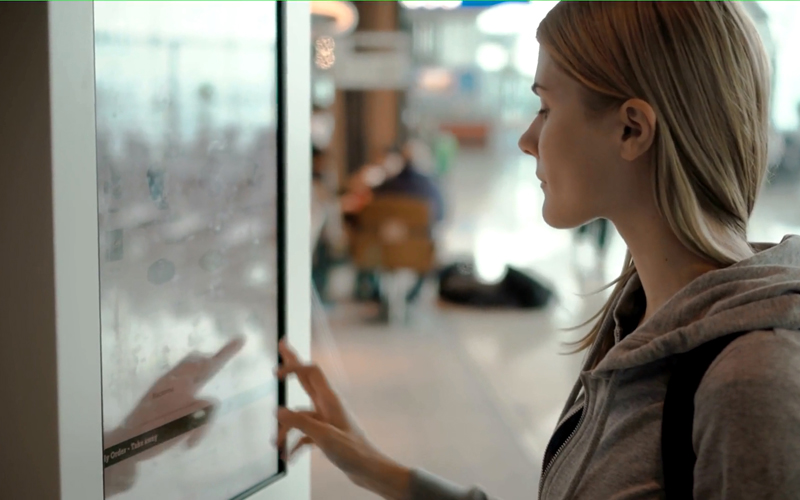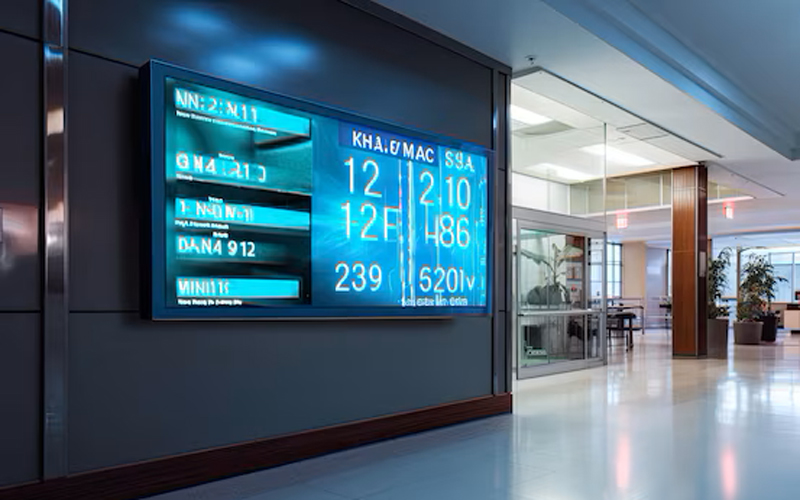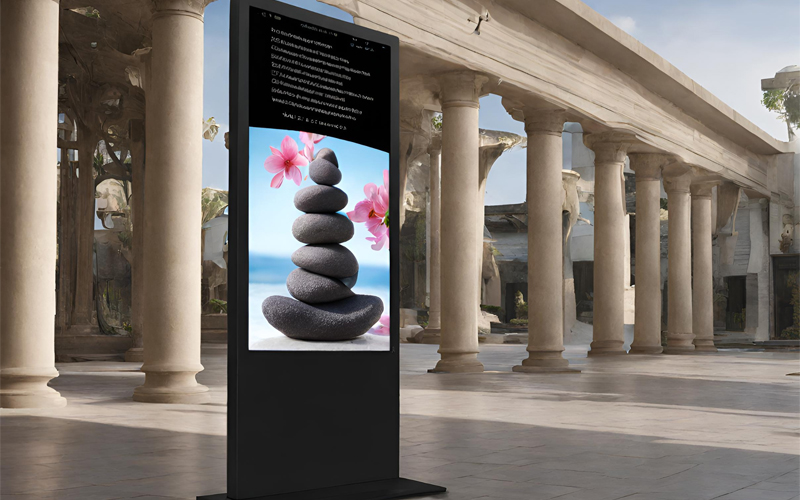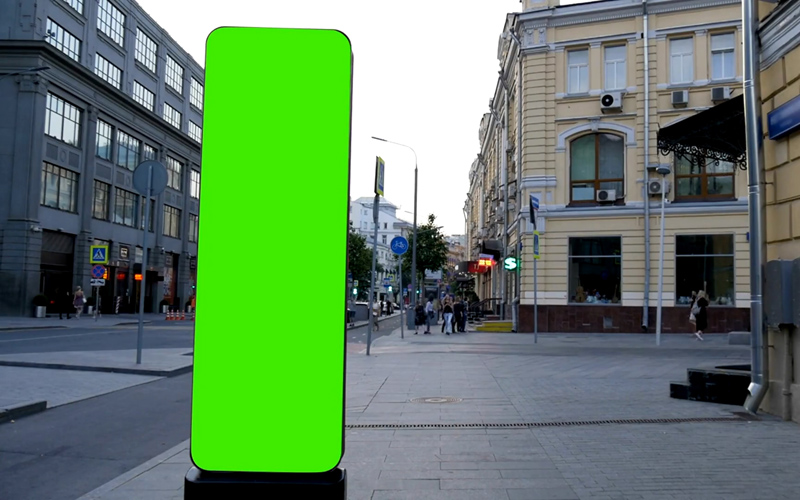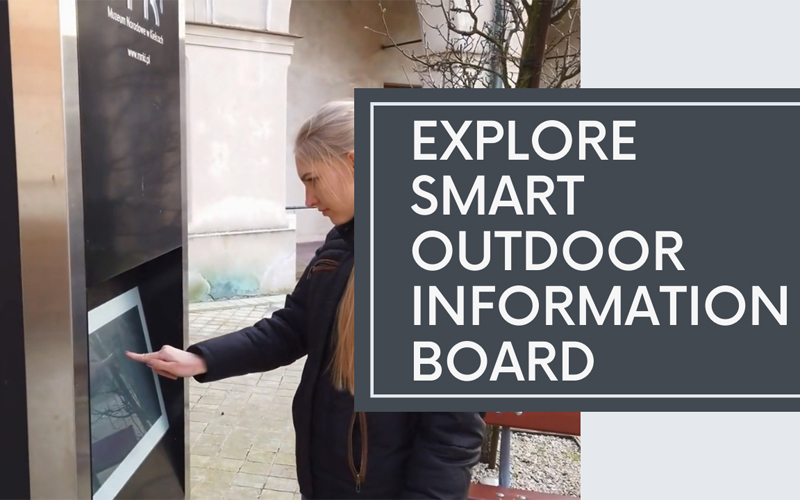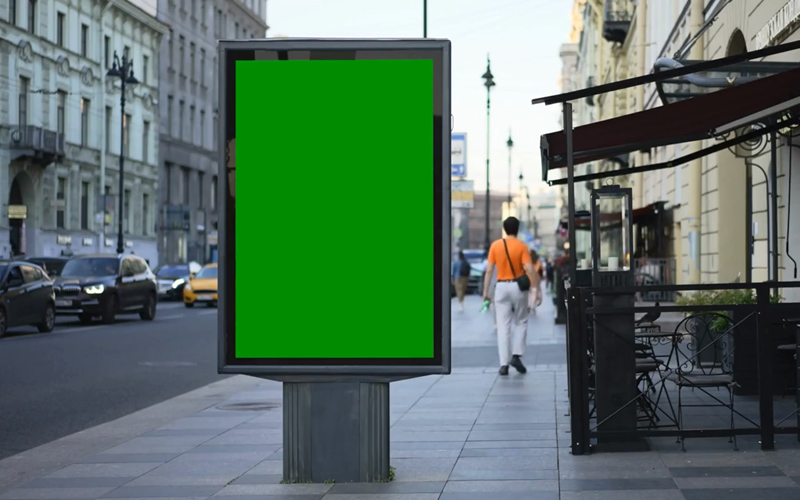Outdoor digital signs are powerful communication tools that leverage advanced display technologies to deliver captivating content and information. These versatile platforms can be found in a variety of settings, from the grand entrances of luxury hotels to the bustling corridors of busy tourist attractions. By harnessing the power of digital media, these signs offer a level of flexibility, interactivity, and impact that traditional static signage simply cannot match.
Benefits of Using Outdoor Digital Signs in Hotels, Resorts, and Tourist Attractions
The integration of outdoor digital signs in the hospitality and tourism industry has brought about a wealth of benefits. Firstly, these dynamic displays have the ability to capture the attention of guests and visitors, effectively communicating critical information and promoting key offerings. Whether it’s highlighting upcoming events, showcasing special promotions, or providing wayfinding assistance, outdoor digital signs ensure that the right message reaches the right audience at the right time.
Moreover, these innovative solutions have the potential to enhance the overall guest experience. By offering interactive wayfinding, real-time updates on resort amenities, and personalized recommendations, outdoor digital signs empower visitors to navigate their surroundings with ease and make the most of their stay. This level of engagement not only fosters a stronger connection between the establishment and its guests but also leaves a lasting impression, encouraging repeat visits and positive word-of-mouth.
Innovative Outdoor Display Technologies for Information and Promotion
The hospitality and tourism industry has embraced a wide range of outdoor display technologies to elevate their signage solutions. From large-format LED screens that command attention to sleek and weatherproof touchscreen kiosks, these advanced platforms offer unparalleled versatility and impact.
One particularly innovative technology is the use of interactive wayfinding solutions. These digital displays, often strategically placed at key locations, allow guests and visitors to easily navigate their surroundings, access information about nearby attractions, and even plan their itinerary on the go. By integrating intuitive touchscreen interfaces and dynamic mapping capabilities, these wayfinding systems transform the traditional guest experience, fostering a sense of exploration and discovery.
Another exciting development is the rise of dynamic content displays. These outdoor digital signs can showcase a wide range of multimedia content, from captivating videos and eye-catching graphics to real-time updates on weather, events, and visitor information. By constantly refreshing the content, these displays maintain a sense of relevance and excitement, ensuring that guests and visitors are always engaged and informed.
Interactive Wayfinding Solutions for Enhanced Visitor Engagement
As the primary keyword for this article, interactive wayfinding solutions deserve a closer look. These cutting-edge digital displays have revolutionized the way guests and visitors navigate and explore hotels, resorts, and tourist attractions.
At the heart of these wayfinding systems are intuitive touchscreen interfaces that allow users to easily access maps, directions, and information about their surroundings. With a simple tap or swipe, visitors can quickly locate key amenities, plan their itinerary, and discover hidden gems within the property or destination. The integration of dynamic mapping capabilities further enhances the experience, providing real-time updates on the location of specific facilities, events, or points of interest.
But the benefits of interactive wayfinding go beyond just navigation. These digital solutions also serve as powerful engagement tools, encouraging guests and visitors to actively explore and immerse themselves in the environment. By offering personalized recommendations, interactive content, and even gamification elements, these wayfinding systems foster a sense of discovery and adventure, leaving a lasting impression on those who interact with them.
Dynamic Content Displays for Real-Time Visitor Information
Outdoor digital signs in the hospitality and tourism industry are not just limited to static displays. The rise of dynamic content displays has revolutionized the way information is presented and shared with guests and visitors.
These cutting-edge displays can showcase a wide range of multimedia content, from captivating videos and eye-catching graphics to real-time updates on weather, events, and visitor information. By constantly refreshing the content, these dynamic displays maintain a sense of relevance and excitement, ensuring that guests and visitors are always engaged and informed.
One of the key advantages of dynamic content displays is their ability to adapt to the changing needs and preferences of the audience. For example, in a resort setting, these screens can showcase upcoming events, highlight special promotions, or even provide real-time updates on the availability of amenities and activities. This level of responsiveness not only enhances the guest experience but also enables hospitality and tourism professionals to effectively communicate their offerings and drive engagement.
Hospitality Digital Kiosks for Convenient Access to Hotel Services
Outdoor digital signs in the hospitality industry extend beyond just informational and promotional displays. The integration of hospitality digital kiosks has revolutionized the way guests access and interact with hotel services.
These interactive kiosks, strategically placed throughout the hotel premises, provide guests with a convenient and intuitive way to access a wide range of services. From checking in and out to ordering room service, making reservations, and even accessing their personal account information, these digital kiosks empower guests to take control of their stay and streamline their interactions with the hotel staff.
By leveraging touchscreen technology and user-friendly interfaces, hospitality digital kiosks offer a seamless and efficient experience for guests. Additionally, these kiosks can be customized to provide personalized recommendations, based on the guest’s preferences and past interactions, further enhancing the overall experience.
Tourism Signage Innovations for Effective Promotion of Attractions
The hospitality and tourism industry has also embraced outdoor digital signs as a powerful tool for promoting and highlighting key attractions and destinations. These innovative signage solutions go beyond simply displaying static information, offering a dynamic and engaging way to capture the attention of visitors.
One such example is the use of tourism-focused digital displays that showcase the unique features, history, and must-see sights of a particular attraction or destination. These screens can incorporate captivating visuals, interactive content, and even augmented reality elements to immerse visitors in the experience, inspiring them to explore further and share their discoveries with others.
Moreover, these tourism signage innovations can be strategically placed at high-traffic areas, such as transportation hubs, hotel lobbies, and popular tourist landmarks. By leveraging the visibility and foot traffic of these locations, hospitality and tourism professionals can effectively promote their offerings and drive increased visitation to their attractions.
Resort Digital Directories for Easy Navigation and Information
In the context of resort environments, outdoor digital signs have become an indispensable tool for enhancing the guest experience. One such innovation is the resort digital directory, which serves as a comprehensive and user-friendly platform for guests to navigate their surroundings and access relevant information.
These digital directories, often located at the resort’s main entrance or other strategic locations, provide guests with a centralized hub for accessing a wealth of information. From detailed maps and directions to the location of amenities, upcoming events, and even real-time updates on the availability of activities, these directories empower guests to plan their stay and make the most of their time at the resort.
The integration of intuitive touchscreen interfaces and dynamic content updates ensures that the information presented is always current and relevant. Moreover, resort digital directories can be customized to provide personalized recommendations based on the guest’s preferences, further enhancing the overall experience and fostering a stronger connection between the resort and its visitors.
Smart Digital Signage for Personalized Guest Experiences
The hospitality and tourism industry has also embraced the power of smart digital signage to deliver personalized experiences to guests and visitors. These advanced outdoor digital signs leverage data-driven insights and cutting-edge technologies to tailor the content and information displayed to the individual user.
One of the key features of smart digital signage is its ability to recognize and respond to guest preferences and behavior. Through the integration of facial recognition, location tracking, and other advanced analytics, these displays can identify the user and deliver customized content, recommendations, and even targeted promotions based on their preferences and past interactions.
For example, in a hotel setting, a smart digital sign might greet a returning guest by name, provide them with personalized recommendations for dining and entertainment options, and even offer special offers or discounts tailored to their preferences. This level of personalization not only enhances the guest experience but also fosters a stronger sense of loyalty and engagement with the hotel brand.
Hotel Promotional Screens for Targeted Marketing Campaigns
Outdoor digital signs in the hospitality industry have also become a powerful tool for executing targeted marketing campaigns. These promotional screens, strategically placed in high-traffic areas, can showcase a wide range of dynamic content, from eye-catching advertisements and special offers to informative videos and interactive experiences.
One of the key advantages of hotel promotional screens is their ability to capture the attention of guests and visitors. By leveraging attention-grabbing visuals, engaging multimedia content, and even interactive elements, these displays can effectively communicate the hotel’s brand messaging, highlight its unique offerings, and drive conversions through targeted promotions.
Moreover, the flexibility of these outdoor digital signs allows hospitality professionals to easily update and adjust the content, ensuring that the marketing campaigns remain relevant and responsive to the changing needs and preferences of the target audience. This agility is particularly valuable in an industry where trends and consumer behavior can shift rapidly, enabling hotels to stay ahead of the curve and maintain a competitive edge.
Touchscreen Tourist Guides for Interactive Exploration
In the realm of tourist attractions and destinations, outdoor digital signs have evolved beyond static displays to become interactive touchscreen tourist guides. These innovative solutions empower visitors to actively explore and engage with the information presented, fostering a more immersive and memorable experience.
Touchscreen tourist guides often feature intuitive interfaces that allow users to access a wealth of information about the attraction or destination. From detailed maps and directions to historical facts, cultural insights, and multimedia content, these digital guides provide visitors with a comprehensive and engaging way to learn about and navigate their surroundings.
Moreover, the interactive nature of these touchscreen displays encourages visitors to actively participate in their exploration. By enabling them to access additional information, plan their itinerary, and even access related content through QR codes or augmented reality features, these tourist guides transform the traditional passive experience into an interactive and personalized journey of discovery.
Digital Concierge Services for Seamless Guest Interactions
The hospitality industry has also embraced outdoor digital signs as a platform for delivering seamless and efficient concierge services to guests. These digital concierge solutions, often housed in strategically placed kiosks or interactive displays, provide visitors with a convenient and user-friendly way to access a wide range of hotel services and information.
Through intuitive touchscreen interfaces, guests can easily make reservations, request assistance, and even access their personal account information. The integration of real-time data and dynamic content updates ensures that the information presented is always current and relevant, empowering guests to make informed decisions and navigate their stay with ease.
Beyond the practical benefits, digital concierge services also offer an enhanced level of personalization. By leveraging guest preferences, past interactions, and even location-based data, these digital solutions can provide tailored recommendations and specialized assistance, fostering a stronger connection between the hotel and its guests.
Interactive Hotel Maps for Efficient Navigation
In the hospitality industry, outdoor digital signs have also become invaluable tools for enhancing the guest experience through interactive hotel maps. These dynamic displays provide visitors with a comprehensive and intuitive way to navigate the hotel premises, locate key amenities, and plan their activities.
At the heart of these interactive hotel maps are touchscreen interfaces that allow guests to easily explore the layout of the hotel, access information about specific facilities, and even discover hidden gems or upcoming events. The integration of real-time data and wayfinding capabilities further enhances the user experience, enabling guests to stay informed and efficiently navigate their surroundings.
Beyond just providing directions, these interactive hotel maps can also serve as engagement platforms, offering personalized recommendations, interactive content, and even gamification elements that encourage guests to actively explore and discover the hotel’s offerings. This level of interactivity not only improves the overall guest experience but also fosters a stronger sense of connection and loyalty to the hotel brand.
Resort Event Displays for Promoting Upcoming Events
In the context of resort environments, outdoor digital signs have become an invaluable tool for promoting and highlighting upcoming events and activities. These dynamic event displays, strategically placed throughout the resort premises, provide guests with a comprehensive and visually engaging way to stay informed about the resort’s offerings.
These event-focused digital displays can showcase a wide range of content, from captivating videos and eye-catching graphics to detailed schedules, event descriptions, and even real-time updates on availability or changes. By constantly refreshing the content, these displays maintain a sense of relevance and excitement, ensuring that guests are always aware of the resort’s upcoming events and have the opportunity to plan their stay accordingly.
Moreover, the integration of interactive elements, such as touchscreen interfaces or even augmented reality features, can further enhance the guest experience. Visitors can easily access additional information, purchase tickets, or even register for events directly through the digital displays, streamlining the process and fostering a sense of engagement and excitement.
Digital Attraction Guides for Enhancing Visitor Experiences
In the tourism industry, outdoor digital signs have evolved beyond just informational displays to become interactive attraction guides that elevate the visitor experience. These cutting-edge solutions leverage advanced technologies to provide guests with a comprehensive and immersive way to explore and discover the highlights of a particular attraction or destination.
At the heart of these digital attraction guides are intuitive touchscreen interfaces that allow visitors to access a wealth of information, multimedia content, and interactive experiences. From detailed maps and historical facts to virtual tours, augmented reality features, and personalized recommendations, these guides empower guests to tailor their exploration and uncover the true essence of the attraction.
By seamlessly integrating these digital attraction guides into the overall visitor experience, hospitality and tourism professionals can create a sense of discovery and engagement that transcends the traditional passive experience. Guests are encouraged to actively participate in their exploration, fostering a deeper understanding and appreciation for the attraction’s significance and uniqueness.
Wayfinding Digital Solutions for Improving Accessibility
In the hospitality and tourism industry, outdoor digital signs have also become instrumental in enhancing accessibility and improving the overall guest experience. Through the integration of wayfinding digital solutions, visitors with diverse needs and preferences can navigate their surroundings with ease and confidence.
These wayfinding systems often feature intuitive touchscreen interfaces that provide clear and concise directions, accompanied by visual cues and audio support. By offering multilingual options, high-contrast displays, and even integration with assistive technologies, these digital solutions ensure that all guests, regardless of their abilities, can seamlessly access the information they need to explore and enjoy their surroundings.
Moreover, the flexibility of these wayfinding digital solutions allows hospitality and tourism professionals to continuously update and refine the content, ensuring that the information remains accurate, relevant, and tailored to the evolving needs of their guests. This commitment to accessibility not only enhances the overall guest experience but also demonstrates a genuine dedication to inclusivity and diversity within the industry.
Outdoor Event Promotions using Digital Signs
The hospitality and tourism industry has also embraced outdoor digital signs as a powerful tool for promoting and enhancing outdoor events and experiences. These dynamic displays can be strategically placed in high-traffic areas, such as hotel entrances, resort lobbies, or popular tourist destinations, to effectively communicate the details and excitement of upcoming events.
Through the use of captivating visuals, engaging multimedia content, and real-time updates, these outdoor digital signs can effectively capture the attention of guests and visitors, piquing their interest and encouraging them to participate in the event. Whether it’s a music festival, a culinary showcase, or a cultural celebration, these digital displays can convey the energy and atmosphere of the event, fostering a sense of anticipation and excitement among the target audience.
Moreover, the flexibility of outdoor digital signs allows hospitality and tourism professionals to easily update and adjust the content, ensuring that the event promotions remain relevant and responsive to the changing needs and preferences of the audience. This agility is particularly valuable in an industry where events and experiences can be subject to last-minute changes or unexpected circumstances, enabling professionals to adapt and communicate updates effectively.
The Future of Outdoor Digital Signs in the Hospitality and Tourism Industry
As we’ve explored, the use of outdoor digital signs in the hospitality and tourism industry has transformed the way hotels, resorts, and tourist attractions engage with their guests and visitors. From interactive wayfinding solutions and dynamic content displays to personalized guest experiences and seamless event promotions, these innovative digital signage platforms have become indispensable tools in the industry’s quest to deliver exceptional experiences and drive customer loyalty.
Looking ahead, the future of outdoor digital signs in the hospitality and tourism industry is poised to be even more exciting and transformative. As technology continues to advance, we can expect to see even more sophisticated and versatile digital signage solutions that leverage cutting-edge features like artificial intelligence, augmented reality, and predictive analytics to anticipate and cater to the evolving needs and preferences of guests and visitors.
SUNTUNE is a direct supplier of outdoor special displays that can help you elevate your hotel, resort, or tourist attraction with innovative digital signage solutions. Contact us today to learn more about how our products and expertise can enhance the guest experience and drive business success.


